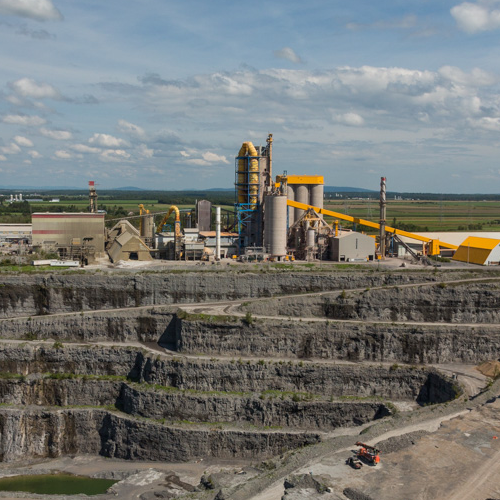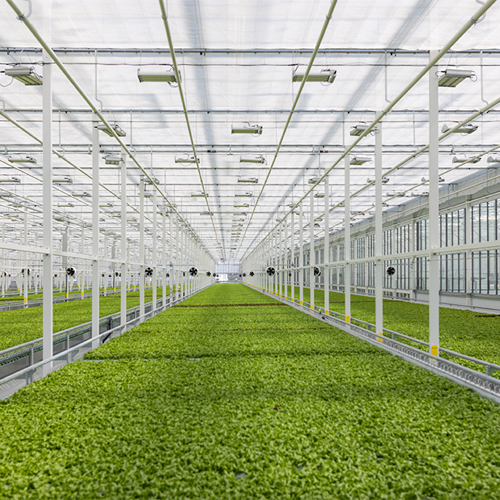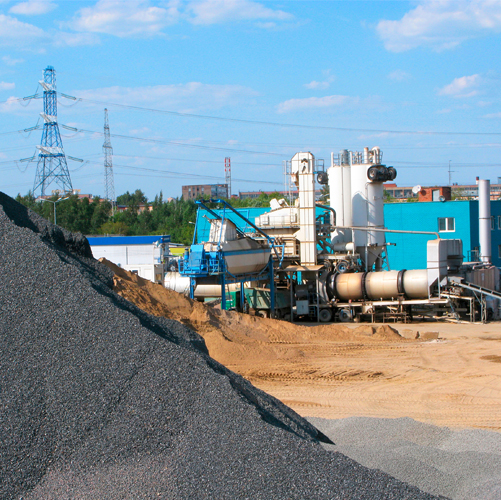Newalta installs advanced controls on its post-combustion kiln and improves the energy efficiency of the unit by 6,910 GJ/year.
The Newalta plant in Sainte-Catherine on Montréal’s South Shore produces secondary smelted lead from waste materials, mostly automotive batteries. The recycled lead is produced using two long-body rotary kilns, each fitted with a post-combustion system to thermally treat and cleanse the gaseous effluents. Improvements were made to the combustion control on one of the exhaust incinerators fitted with four burners. The 18-month project was carried out in three stages.
Background
The post-combustion unit was put into service in the early 1990s. The unit’s principal function is to increase the temperature of the gases from the rotary kiln to ensure the complete destruction of any unburned residues. The gases require thermal treatment at 900°C to complete the combustion. Figure 1 shows the rotary and post-combustion kilns. Because the composition of the different waste materials entering the rotary kiln varies, the composition of unburned residues in the exhaust gases also varies, causing disruptions to the regulation of the post-combustion unit. The controls, from an earlier generation, contributed to the post-combustion instability and a considerable quantity of natural gas was burned to ensure the complete destruction of the unburned residues.
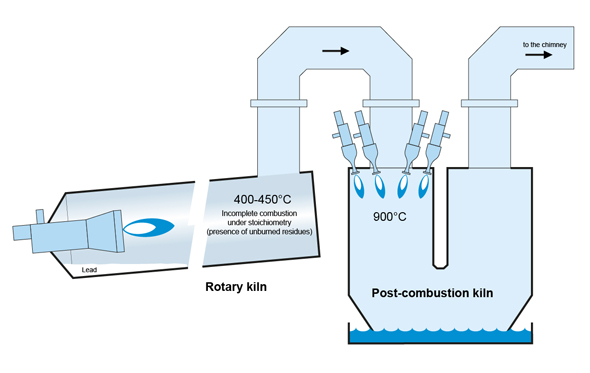
Stages in the energy savings project
In the first stage, it was important to understand the changing dynamics of the procedure and to analyze the variations in the existing post-combustion controls. Also, the sources of the incinerator’s temperature fluctuations had to be determined and, finally, solutions had to be found to make the thermal treatment as efficient as possible.
The analysis showed that the temperature controller that modulates the combustion air vents and the natural gas valves were unstable, with variances of about 20°C recorded in the operating temperature. The imprecision of the vent openings added to the difficulty of keeping the temperature stable. Calibrating the temperature controller helped attenuate those variations, and the decision to install vents with intelligent positioners helped modulate the total air flow better. As a result, the amplitude of the kiln’s temperature changes was reduced, leading to improved efficiency in the complete destruction of the unburned residues and energy savings of more than 1,540 GJ/year.
At this stage, the post-combustion kiln temperature was controlled by modulating the combustion of the four burners by a common signal. The combustion was adjusted by a zero-governor-type pneumatic system. Figure 2 illustrates this control logic.
- The temperature controller is a simple loop that directly modulates the opening of the combustion air vents.
- The zero governor control logic measures the load loss across an orifice plate installed on the air line and correlates this load loss, by measuring the air flow and mechanically adjusting the gas regulator position, to accord with a predefined mechanical calibration of the air:gas ratio.
This system is advantageous when there is little variation in demand and when operations are stable.
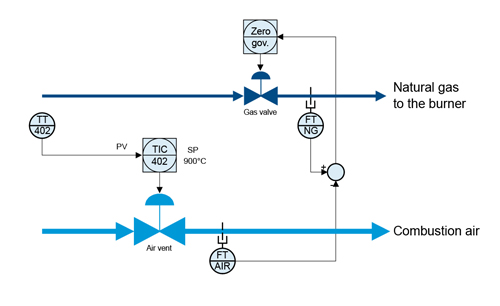
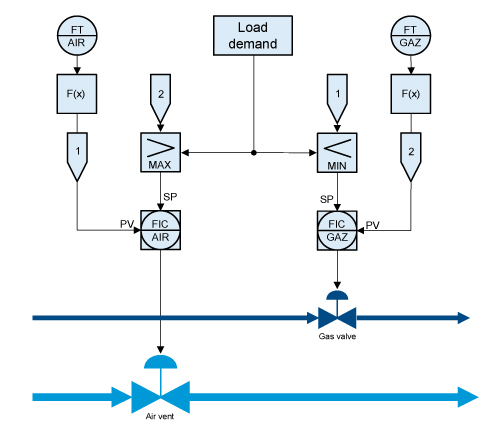
At the end of these two stages, the post-combustion kiln’s efficiency was greatly improved. However, even when operations were slow, the thermal treatment was still carried out with the four burners turned very low. The consumption was higher than the theoretical demand for gas. So, at the third stage of the project, a new automated control system was installed to determine the number of burners needed for the process. With the implementation of a control logic to divide the load and the intelligent management of the burners in service to optimize their efficiency, the system can now turn the burners on or off, as needed, in order to maintain the kiln’s combustion within its optimal efficiency zone. Lastly, more detailed instructions were posted so the operators could supervise the system better. The natural gas savings for this final stage were 2,034 GJ/year.
Investments cost-effective for Newalta
The payback period for the investments in the three-stage project was 2.3 years. Other benefits from the measures implemented include: increased equipment reliability, easier operation of the process, increased production, reduced energy consumption, and emissions that continue to comply with environmental norms. Despite the complexity of these measures, Newalta decided to invest in energy efficiency, which will contribute to ensuring the long-term sustainability of its plant.
M. Guy Desrosiers, Eng. CEM CMVP
DATECH Group
With the collaboration of:
M. Benoît Janvier, Eng. et Dominic Thivierge, Eng.
Enero Solutions
Legend
Figure 2
- TT: temperature transmitter
- PV: point value
- SP: set point
- FT: flow transmitter
- NG: natural gas
Figure 3
- PV: process value (relative to the temperature)
- SP: set point
- FT: flow transmitter
- FC: flow controller
- NG: natural gas
Continue reading





